Do the following exercises, using today's project: Session04_FunctionsMethodsAndParameters
- If there is any previous homework that you have NOT finished (or that you have questions about): then make an appointment NOW to meet with your instructor or an assistant. You definitely want to be caught up by Thursday. Working one-on-one with your instructor or an assistant is the fastest way to do so.
-
If you think that it will be helpful, study the examples in the following modules from today's project:
- m1_defining_and_calling_functions.py
- m2_input_compute_output.py
- m5_parameters_arguments_and_return.py
- Do the TODO's in the m3_range_expresssions.py module of today's project, if you did not complete them in class.
- Do the TODO's in the m4_objects_and_classes.py module of today's project, if you did not complete them in class.
-
Do the TODO's in the m6_parameters.py module of today's project, if you did not complete them in class.
- Here are pictures showing what your code should produce from the tests provided in main.
four_dots()
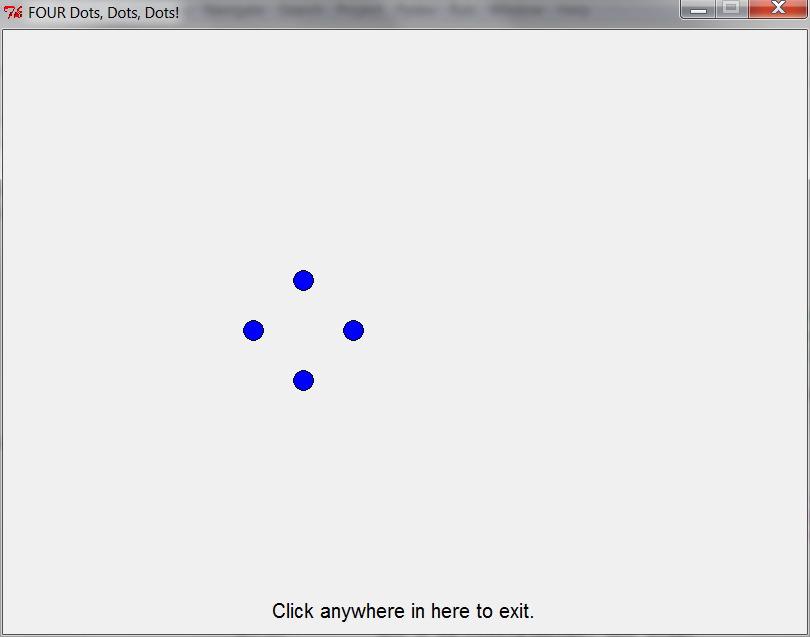
five_dots()
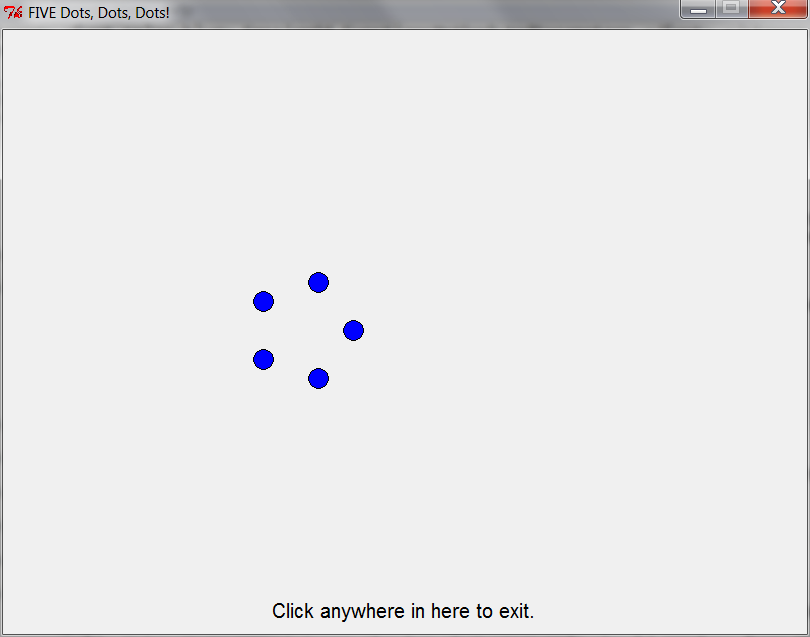
six_dots()
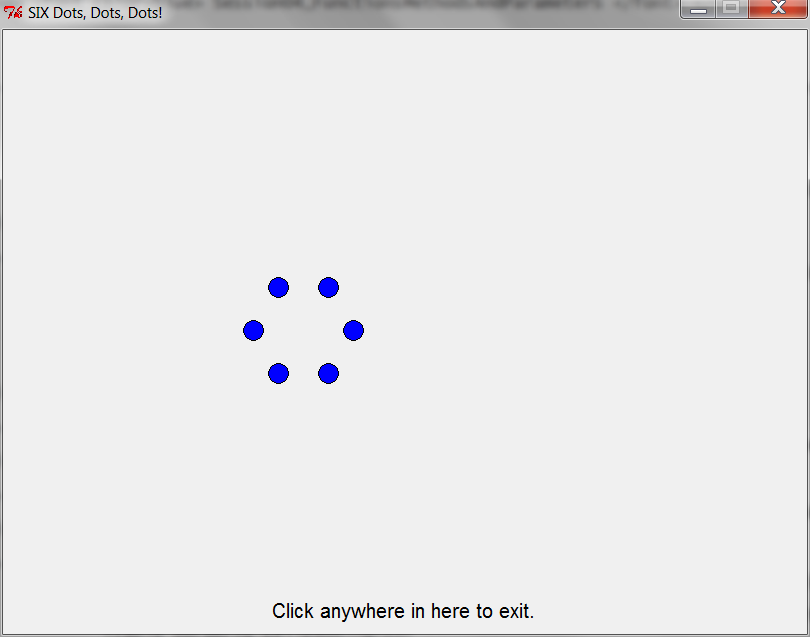
close_window()

better_six_dots()
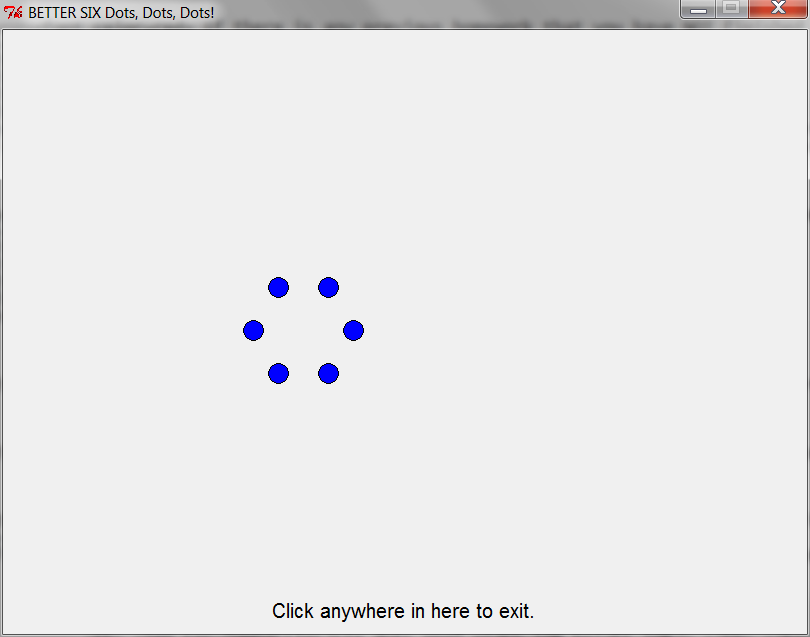
n_dots(8)

n_dots(3)
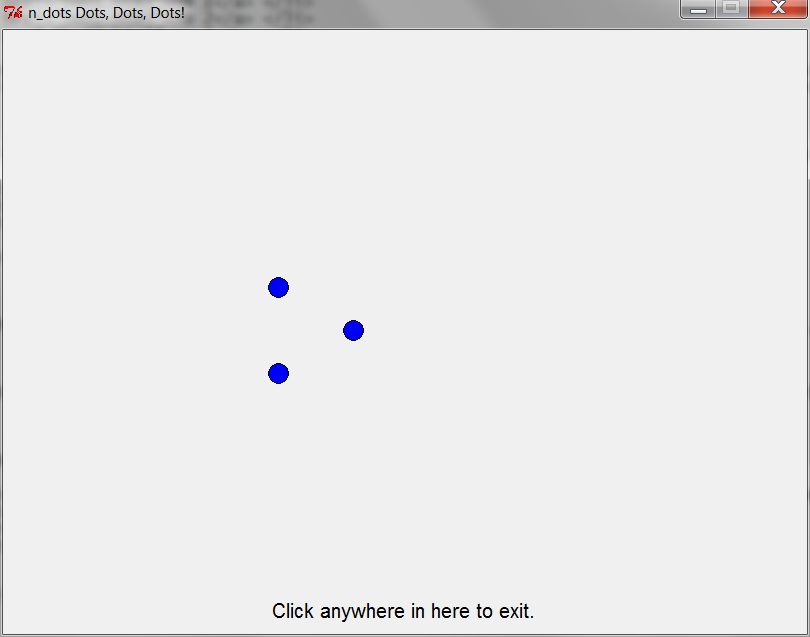
one_to_n_dots(4) — 1st time through loop

one_to_n_dots(4) — 2nd time through loop
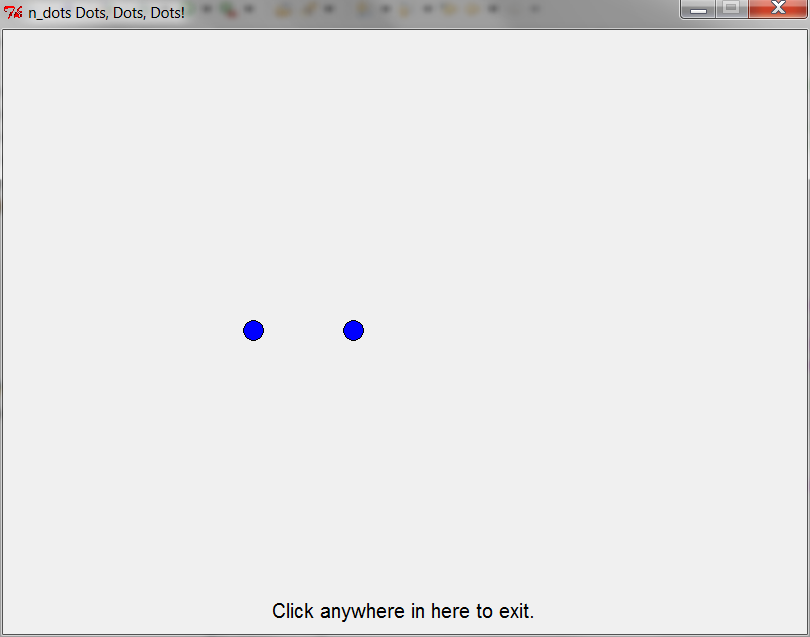
one_to_n_dots(4) — 3rd time through loop
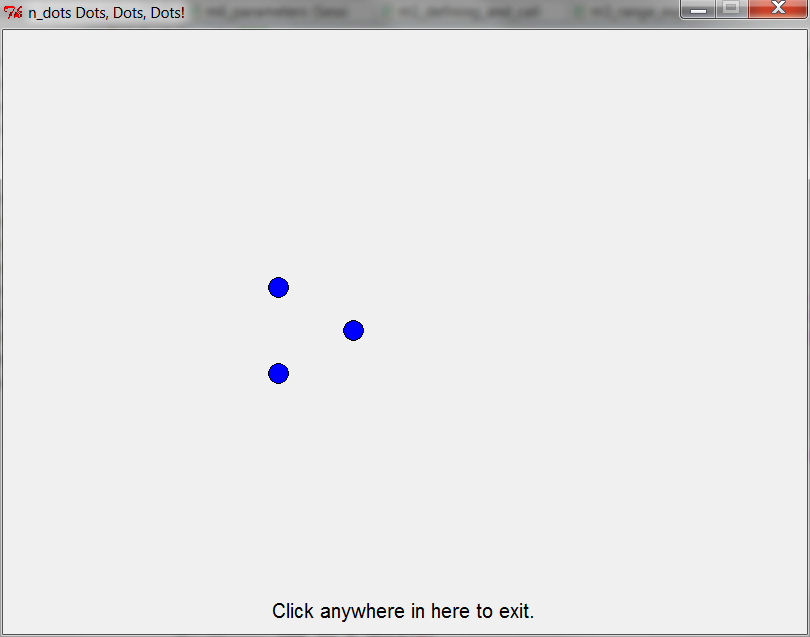
one_to_n_dots(4) — 4th time through loop
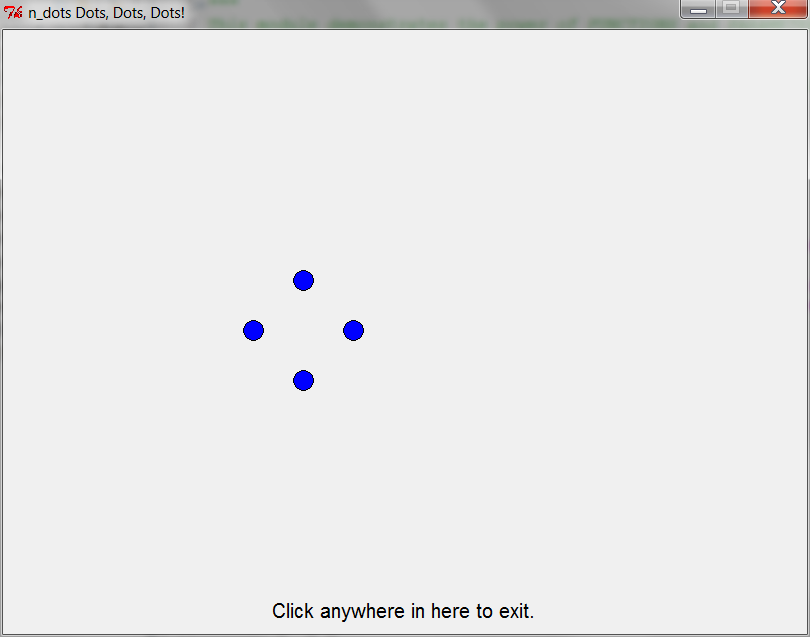
one_to_n_dots(7) — 1st time through loop
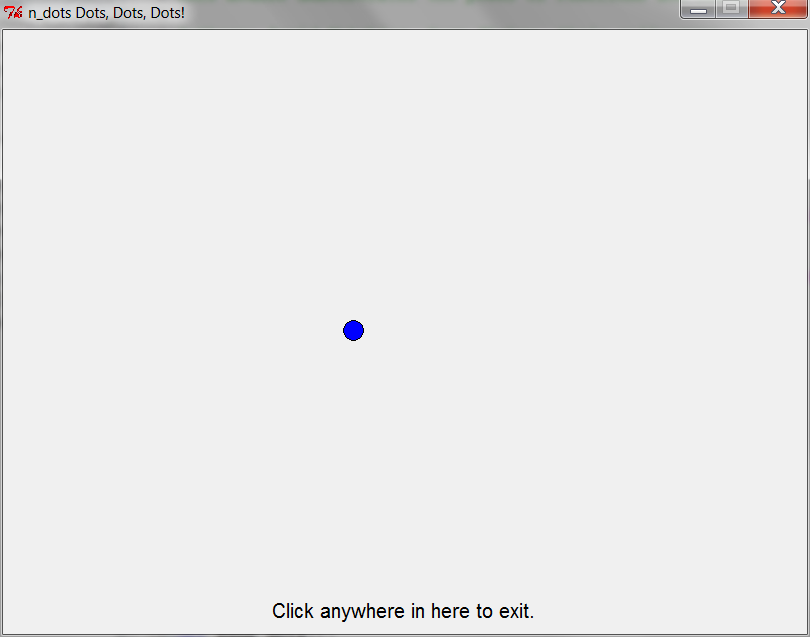
one_to_n_dots(7) — 2nd time through loop
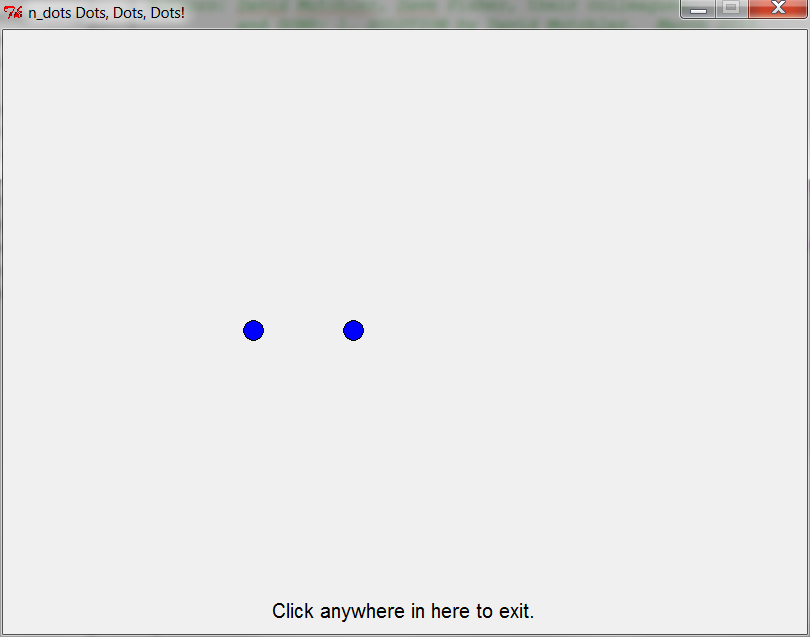
one_to_n_dots(7) — 3rd time through loop
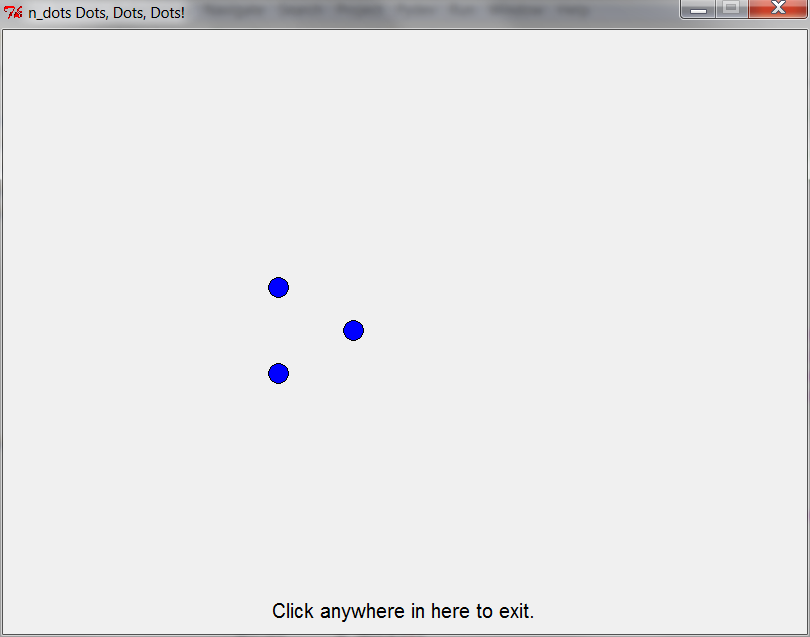
one_to_n_dots(7) — 4th time through loop
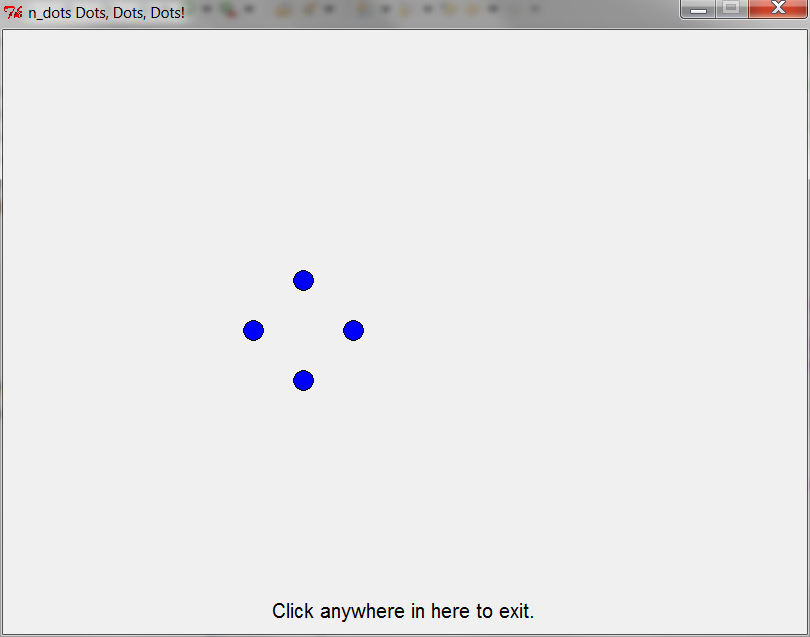
one_to_n_dots(7) — 5th time through loop
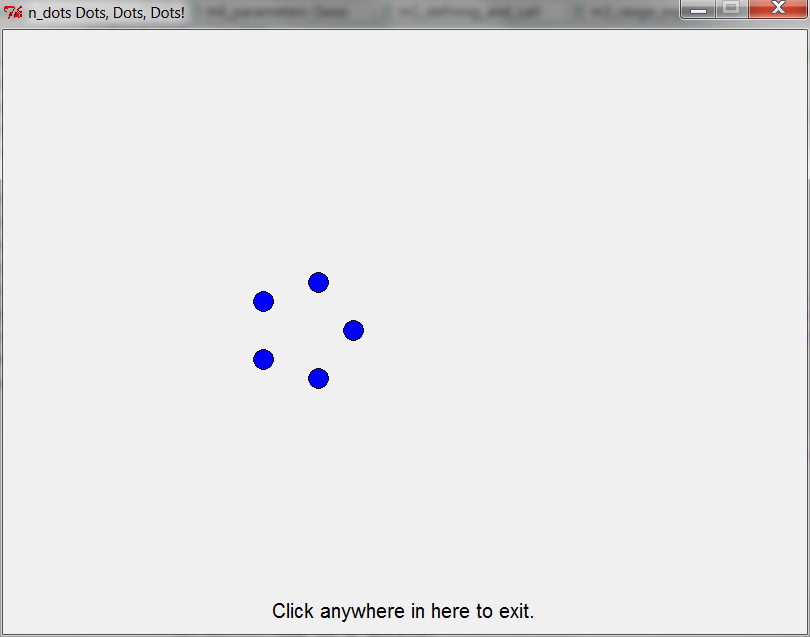
one_to_n_dots(7) — 6th time through loop
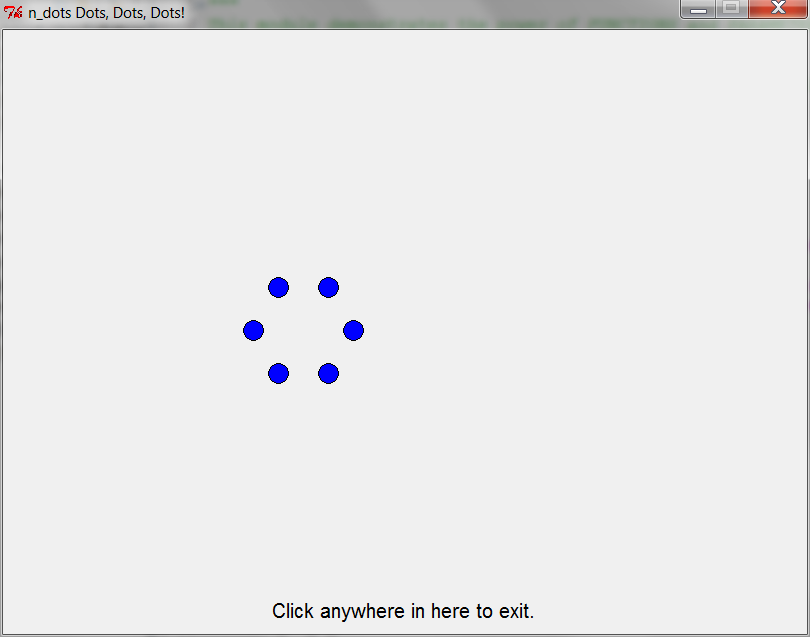
one_to_n_dots(7) — 7th time through loop

- Here are pictures showing what your code should produce from the tests provided in main.
-
Do the TODO's in the m7_parameters.py module of today's project, if you did not complete them in class.
But see the following two NOTE's.
- NOTE: Here are pictures showing what your code should produce from the tests provided in main.
n_dots(window, 7)
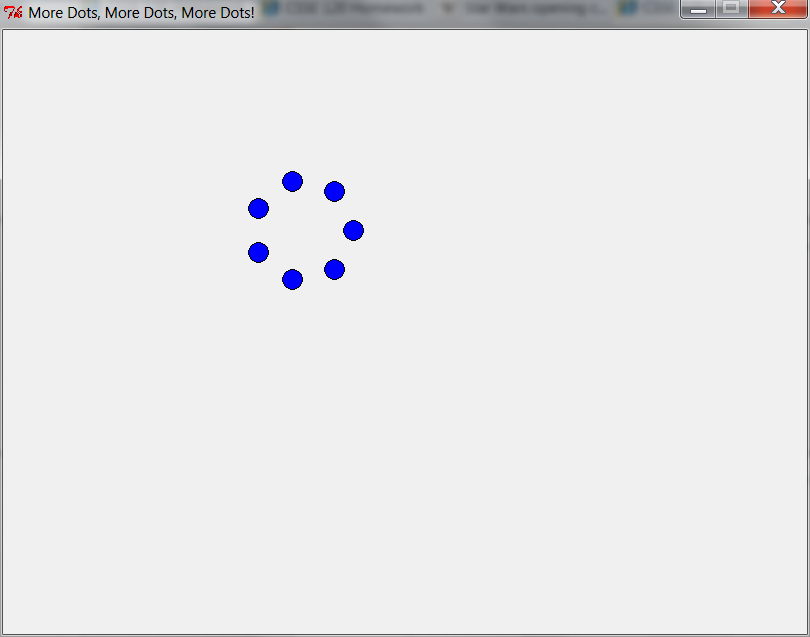
n_dots(window, 4)
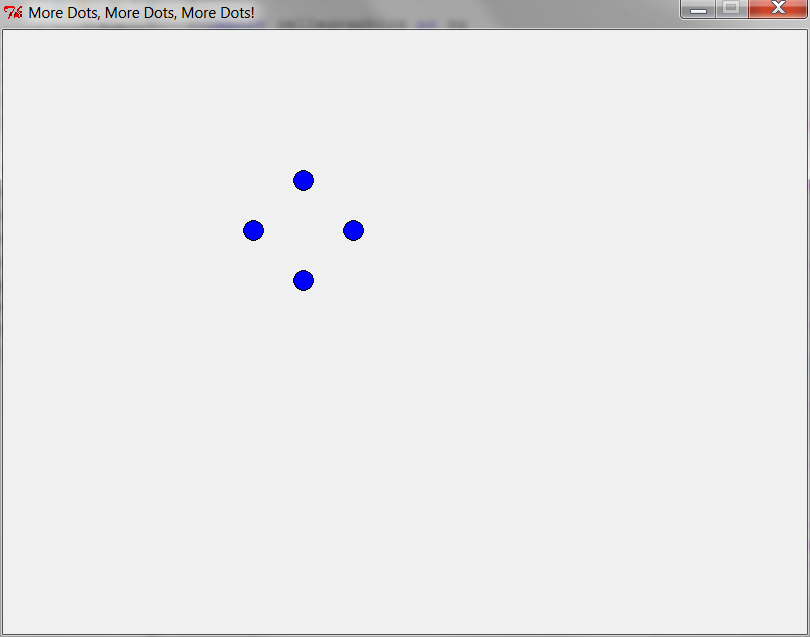
n_dots(window, 7)and
n_dots(window, 4)(both tests, together)
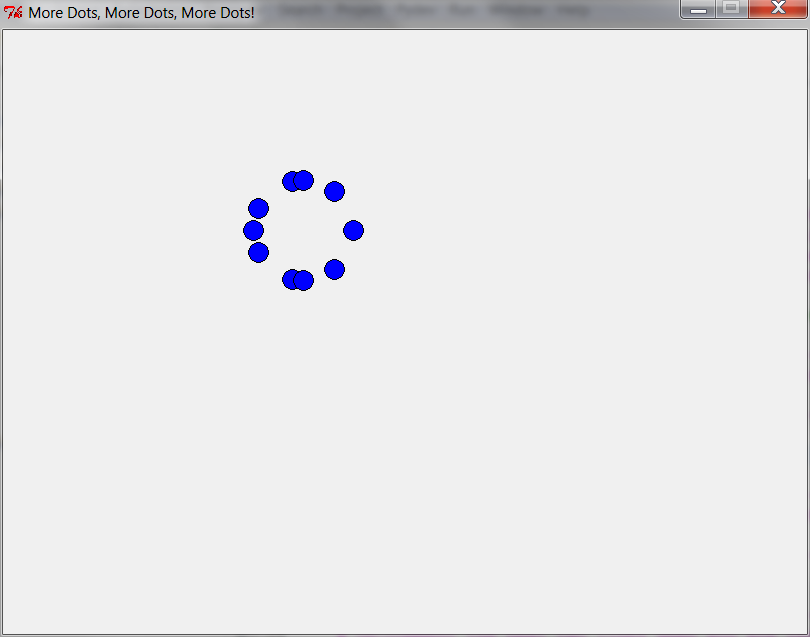
one_to_n_dots(window, 8)
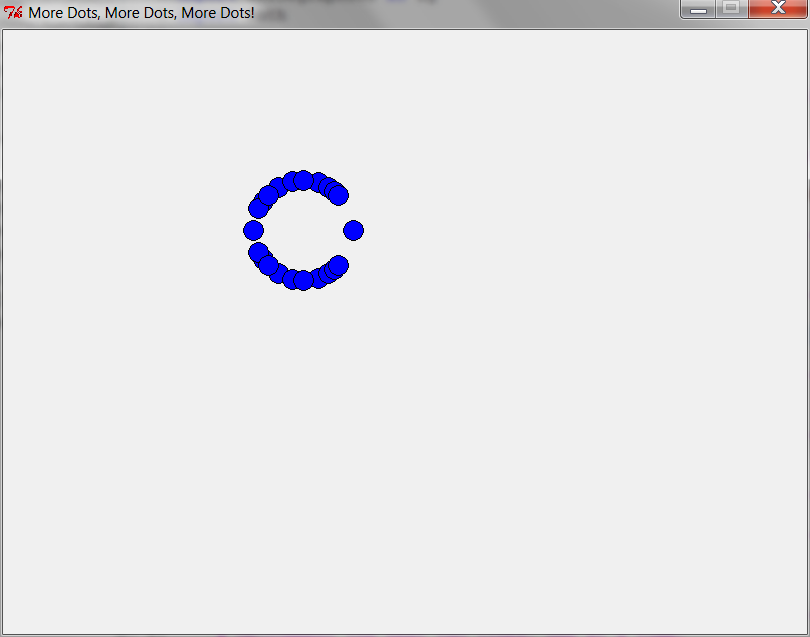
for k in range(5): better_n_dots(5, window, k * 20)
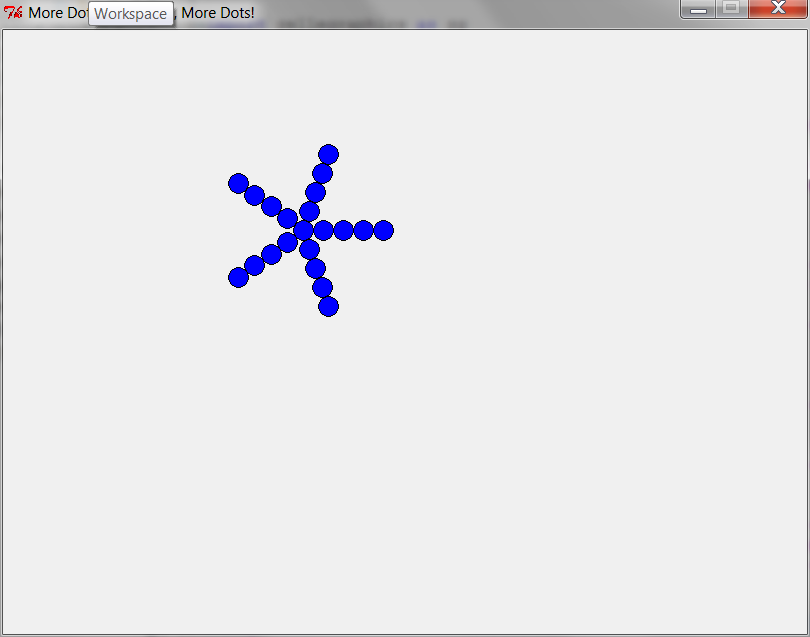
better_one_to_n_dots(8, window, 4)
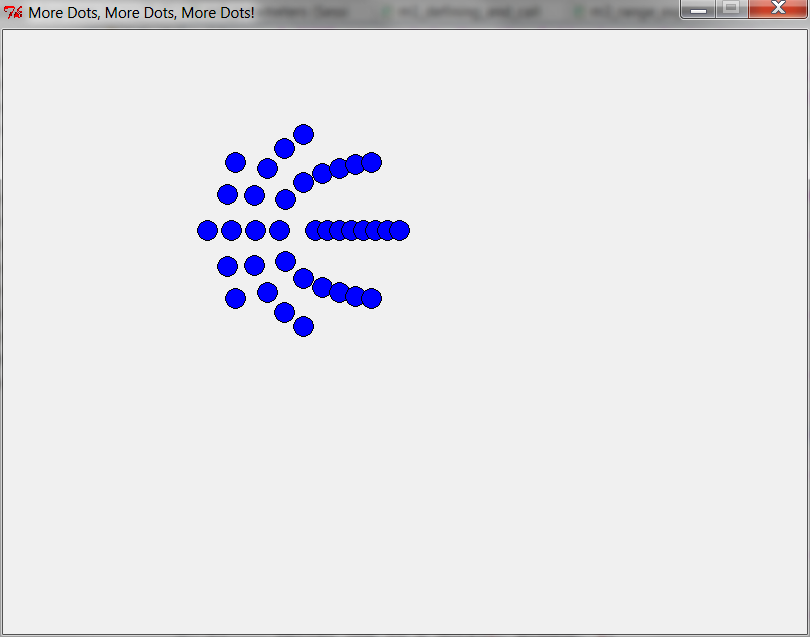
better_one_to_n_dots(8, window, 8)
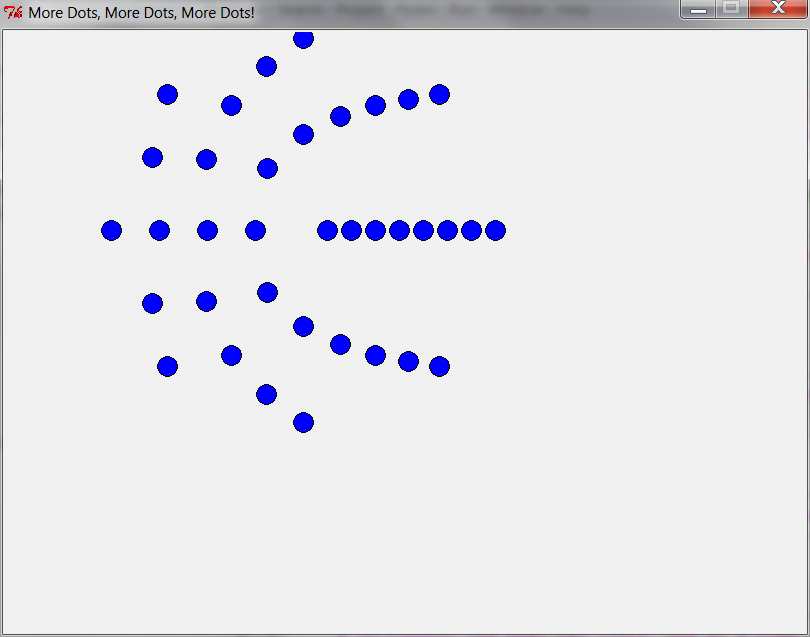
- NOTE: For
best_n_dots, the instructions say:# TODO: 6. Implement and test this function. # In testing it, draw at least 5 interesting shapes, # by calling this function inside simple loops. The 5 shapes # should all appear on the same window without overlapping. (But # any one of your shapes can certainly have things overlapping.)By this, we mean for you to put a simple loop in main that calls best_n_dots, using the loop variable to change the values of the arguments passed to best_n_dots.
For example, here is the code that one student (Ryan Landwehr) put into main to test his best_n_dots:
center = zg.Point(200, 200) dot_size = 10 for k in range(5): best_n_dots(5, window, center, k * 20, dot_size * k)The above code produced the following picture:
Beautiful, isn't it!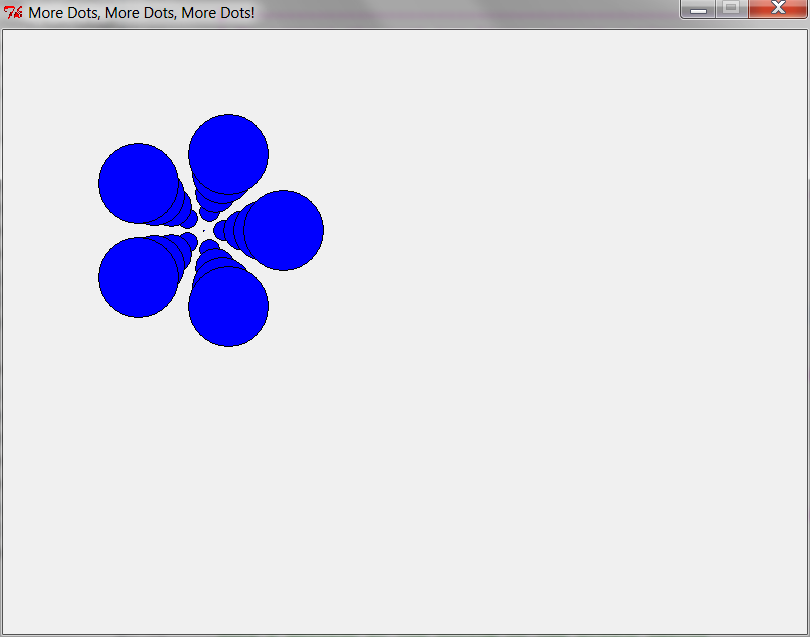
You should do similarly, playing around with where you put the loop variable (k in the above code). Make 5 such loops (you can use the above as one of them, if you like), in hopes of getting 5 “interesting” pictures. Almost anywhere produces something that I would find interesting!
- NOTE: Here are pictures showing what your code should produce from the tests provided in main.
- Consider the following two functions:
def weak_dots(window): n = 10 center = zg.Point(200, 200) radius = 50 dot_size = 10 for k in range(n): # n points, at 0, 2*pi/n, 2 * (2*pi/n), 3 * ..., radians theta = k * 2 * math.pi / n # theta is the angle in radians x = center.x + radius * math.cos(theta) # Polar coordinates to x/y y = center.y + radius * math.sin(theta) point = zg.Point(x, y) dot = zg.Circle(point, dot_size) dot.setFill('blue') dot.draw(window)def strong_dots(window, n, center, radius, dot_size): for k in range(n): # n points, at 0, 2*pi/n, 2 * (2*pi/n), 3 * ..., radians theta = k * 2 * math.pi / n # theta is the angle in radians x = center.x + radius * math.cos(theta) # Polar coordinates to x/y y = center.y + radius * math.sin(theta) point = zg.Point(x, y) dot = zg.Circle(point, dot_size) dot.setFill('blue') dot.draw(window)The above two functions are identical except for the parts marked in red.
Which of the above two functions is more powerful? Why? What makes it more powerful?
There is nothing to turn in for this problem, but the above question is important, so make sure that you see the point. If not, ask in class!